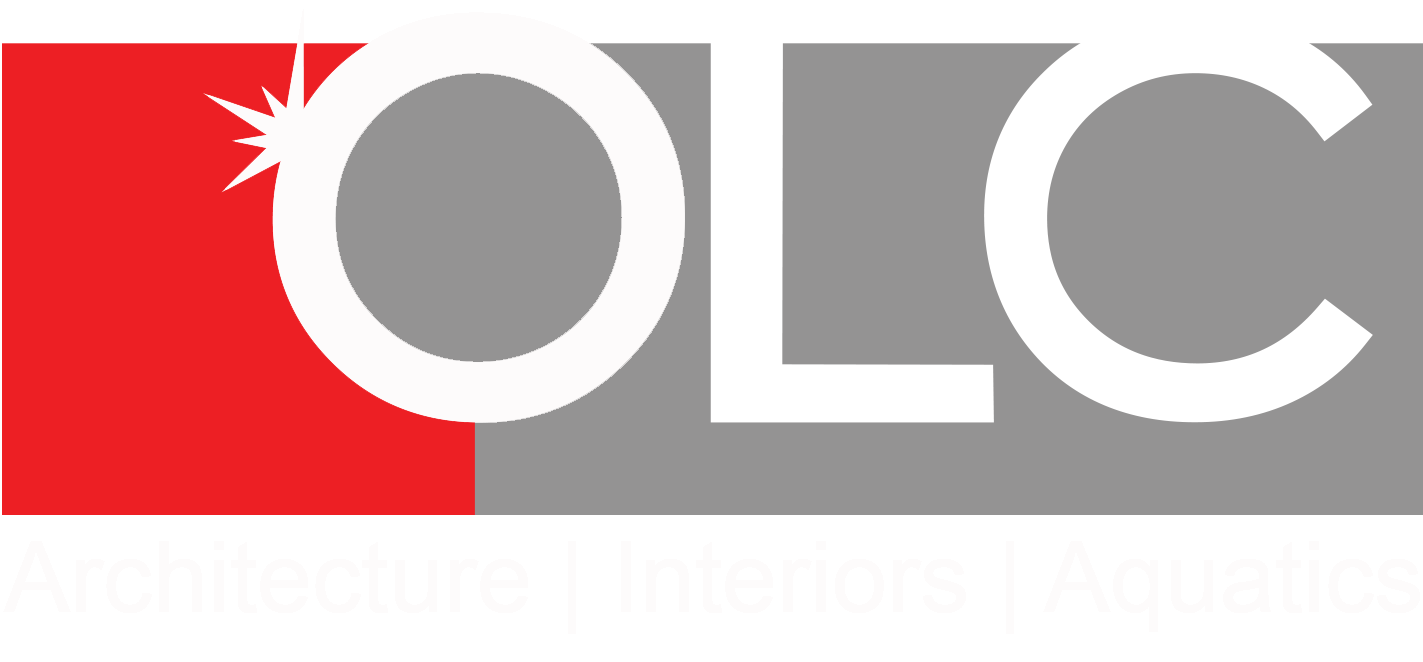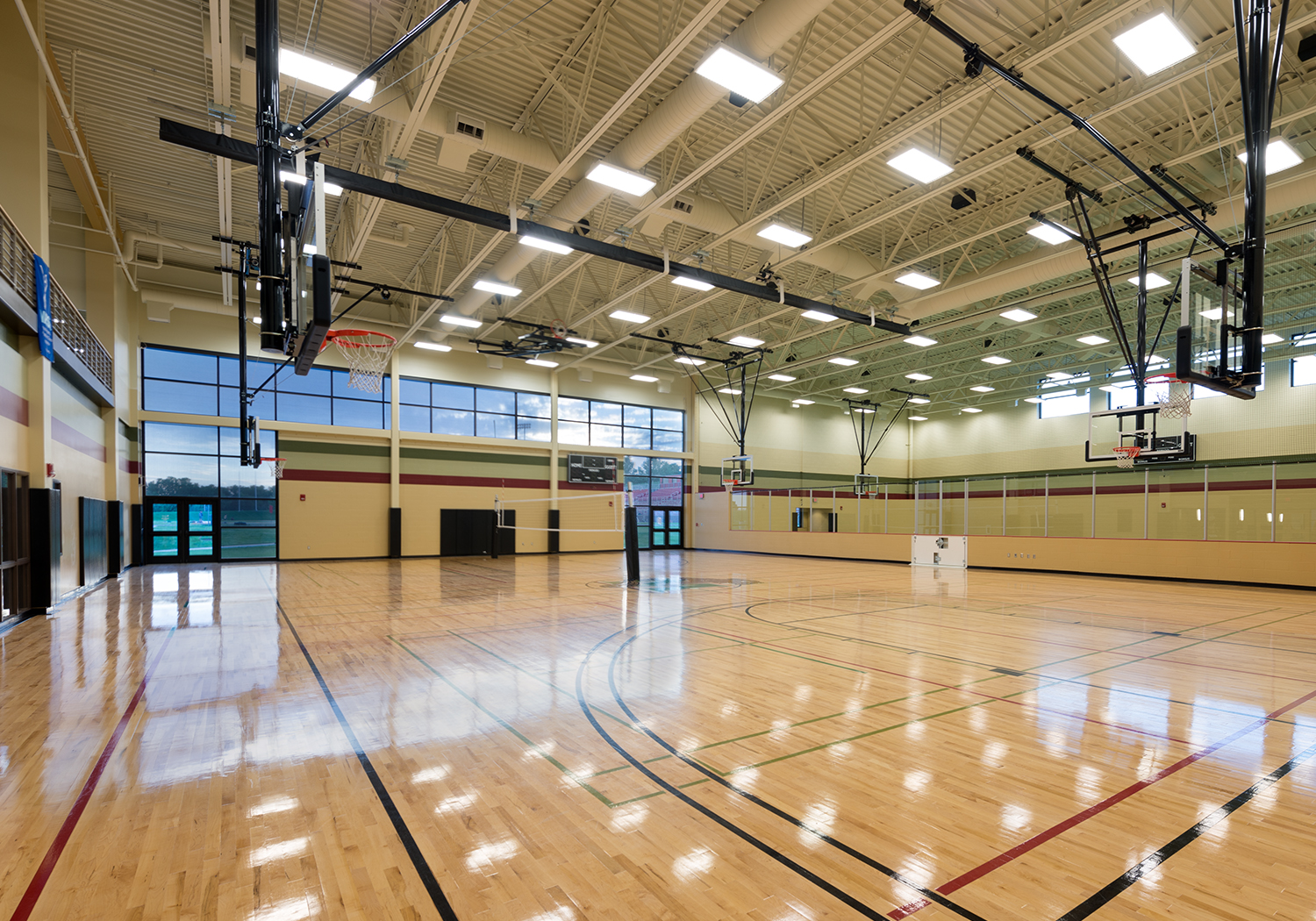
08 Mar The Positive Benefits of Daylight
A Series of Life Changing Design pt. 5
Most Park and Recreation Professionals have a deep understanding of the transformative power recreation has in the communities it serves. The benefits of family cohesion, better health, socialization, community pride, sports enhancement and good sportsmanship all reach deep into the core of better-quality life for all. To assure the best customer service possible occurs amidst rising expectation, and dwindling resources, professionals must use every means at their disposal to implement increasingly better programs at the right price, location, and times with the best instructors, staff, and equipment available. The same holds true of facilities that are expected to be clean, well maintained, and spectacular in the amenities they offer. Providing the very best, well designed facilities is at the core of creating a great guest experience.
Beyond the brick and mortar of a Community Center, and often hidden from the naked eye lay elements the building when designed properly; make the difference between having an experience of confusion and monotony, to one of pure joy and invigoration. This ongoing blog uncovers the fundamentals of several make or break principles of facility design that when implemented by an expert will provide your users with an incredible experience for decades to come.
5. The Positive Benefits of Daylight
As a facility user, I have had a lot of experience with YMCAs, Recreation Centers, and Fitness Clubs throughout my life. As a young boy in a small town, there was little else to do in the long summer months other than to hang out with my friends at the local ‘Y’. As I grew into adulthood, I switched from health club to health club as I moved from one part of the Denver Metro Area to another. In my post graduate days, I worked out at what I could best describe as ‘Your Grandpa’s Recreation Center’. It was what I could afford at the time. Needless-to-say, the strength area was in a dank cavern located down an unfriendly hallway flooded by fluorescent light. The equipment was outdated and in need of repair, and the HVAC system left the place smelling foul and stale. This was not an environment your customers would accept today. If I had to choose which of these maladies was the worst, I would focus on the windowless, prison-like environment the facility presented.
Moving into the modern era, Recreation Centers have opened their floor plans and their windows to the great outdoors, blurring the lines between the inside and outside experience. Long before LEED Certification became fashionable, recreation Architects began exploring and exploiting the many benefits of introducing natural light into facility spaces. We won’t delve into a lot of facts and figures here about these benefits. It’s common knowledge that the productivity and aptitude benefits on students and office workers is undeniable when natural light is introduced into their environments. Examples of broad implementation of daylighting principles in retail giants such as Walmart, where 600 stores realize savings of 250 million KW of electricity on an annual basis. Lastly, and perhaps even more important, is the affect visual connection with the outdoors from inside spaces has on the mood of the indoor users. The positive benefits of daylight in your building contribute to an improved over all customer experience.
Today, we will talk in very general, and nontechnical terms about 4 aspects to this free (well, almost free) way of pumping up your end user experience through design. These four aspects include:
- Building orientation and placement of interior spaces. This involves placing spaces on the perimeter of the building that can enjoy the benefits of natural light, and the vistas to the great outdoors. A common example would be the placement of an indoor pool on the south facing portion of the building, so it enjoys the flood of light into the space. . . especially in the winter. Or, it could be a similar placement of a cardio area facing windows with a view of the ocean.
- Use of high, and clerestory glass on perimeter walls, or walls with exterior elevation changes to allow the light to penetrate deep into otherwise dim spaces. The use of insulated/light diffusing glass can also enhance this approach. This type of glazing system is designed in such a way that light is cast into spaces much further than traditional translucent glazing systems.
- Use of architectural elements such as tubular skylights and light shelves. These elements are used to either thrown natural light deeply into spaces, or bring it vertically into internal ‘light-locked’ spaces through the ceiling plenum. The use of skylights would also pertain here.
- Mitigating glare. Natural light can be difficult to control, and sometimes is not a good friend to activities such as tennis, basketball, and spectating events. How then to best introduce natural light into these spaces without creating an adverse effect?
1. Room placement:
Just to start right off the bat with a dichotomy, natural light is not always a friend of gym use. Direct natural light streaming down onto the floor surface can create glare, and players can be blinded by the same. However, careful placement of a Gymnasium on the North Side of the building, and judicious use of glass can yield results that make for a spectacular space. A great gym space is realized in the Minot State University Student Recreation Center by introduction of glass into the gym space.
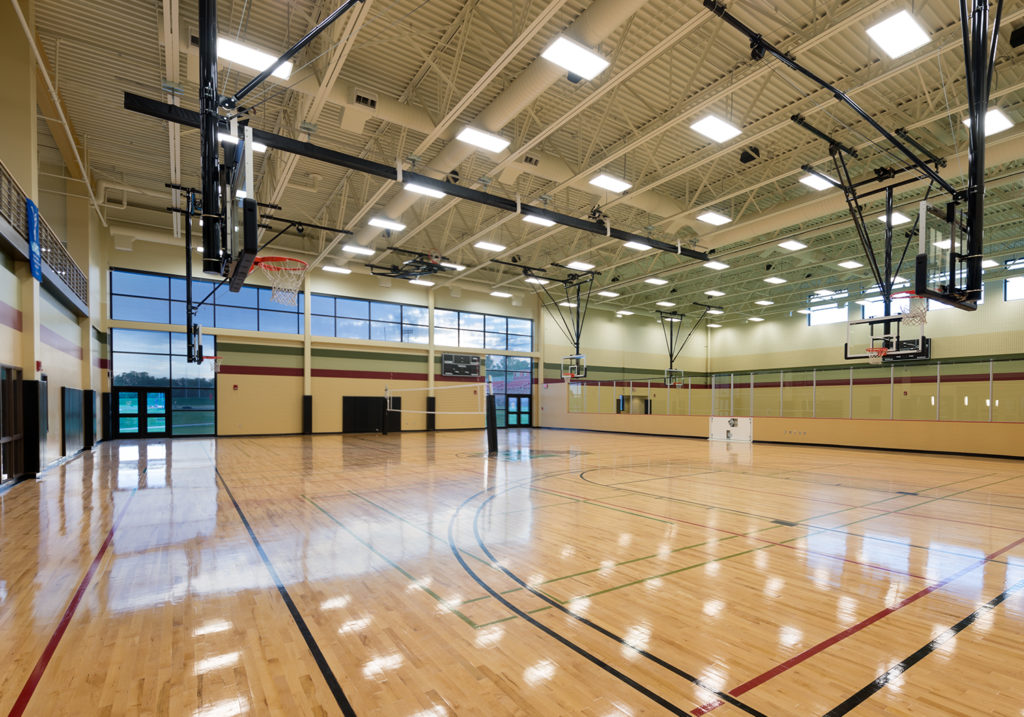
Eastern sun streams into the lobby space at the Campbell County Recreation Center in Gillette, Wyoming. In the dark winter months, users can bask in the early morning light. The solar gain is cut off by more solid elements as the sun moves westward across the sky.
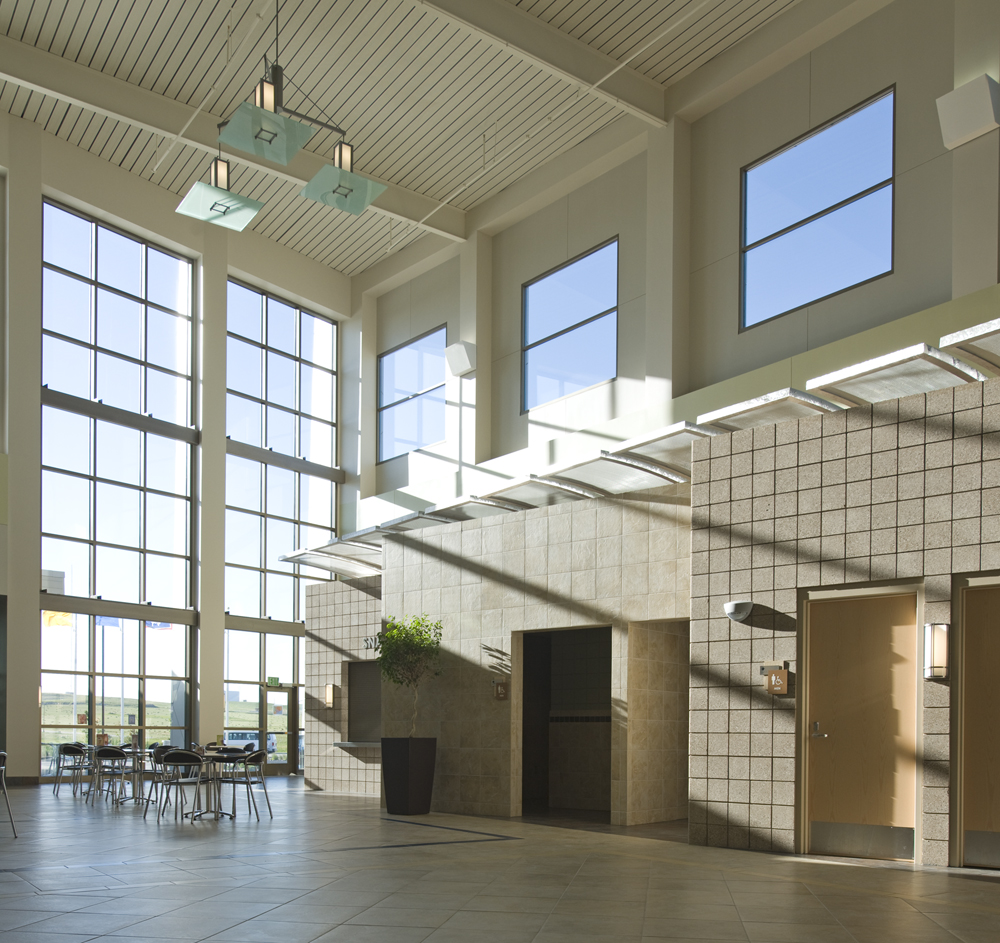
With careful room and window placement, cardio area users at the Estes Valley Community Center in Estes Park, Colorado are treated to spectacular mountain views.
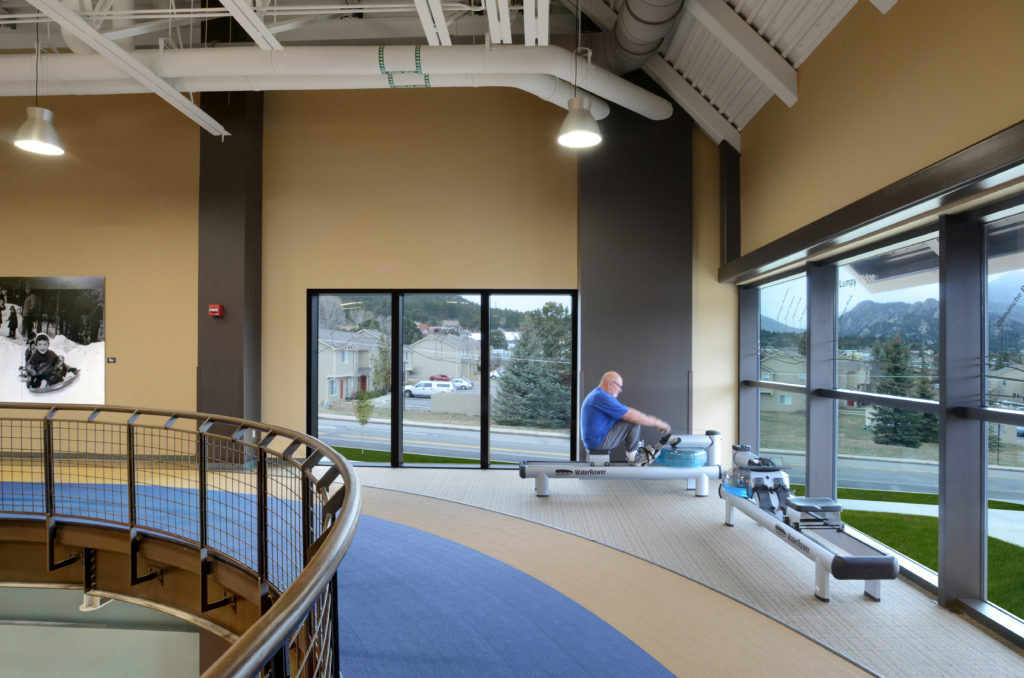
2. Clerestory glass:
Perimeter placement, in addition to clerestory glass, allows natural illumination into the free weight area of the Campbell County Recreation Center in Gillette, Wyoming. The clerestory glazing allows light to penetrate deep into the adjacent fitness spaces too!
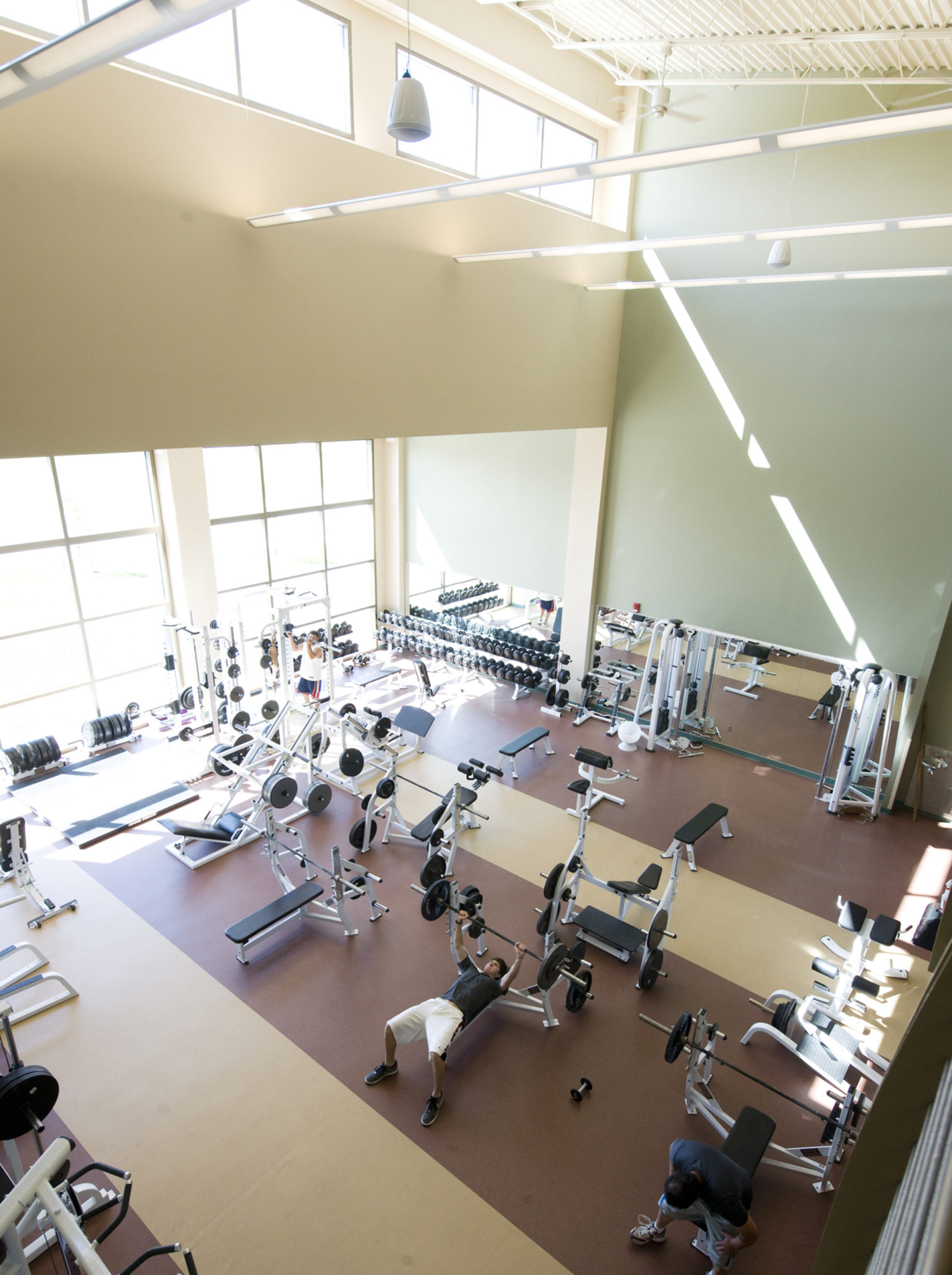
More evidence of light penetrating into the lobby space via clerestories at Pro Health in Melbourne, Florida.

Picture 059
A similar approach to allowing light, and window placement to be of benefit to users in the otherwise ‘buried’ internal spaces is the use of ‘borrowed light’. Here at The Institute for Healthy Living in Longview, Texas, cardio uses are exposed to natural light and exterior views through the pool area. The added benefit is the direct visual connection to both the pool and the track truly evoking a sense of excitement for the user.
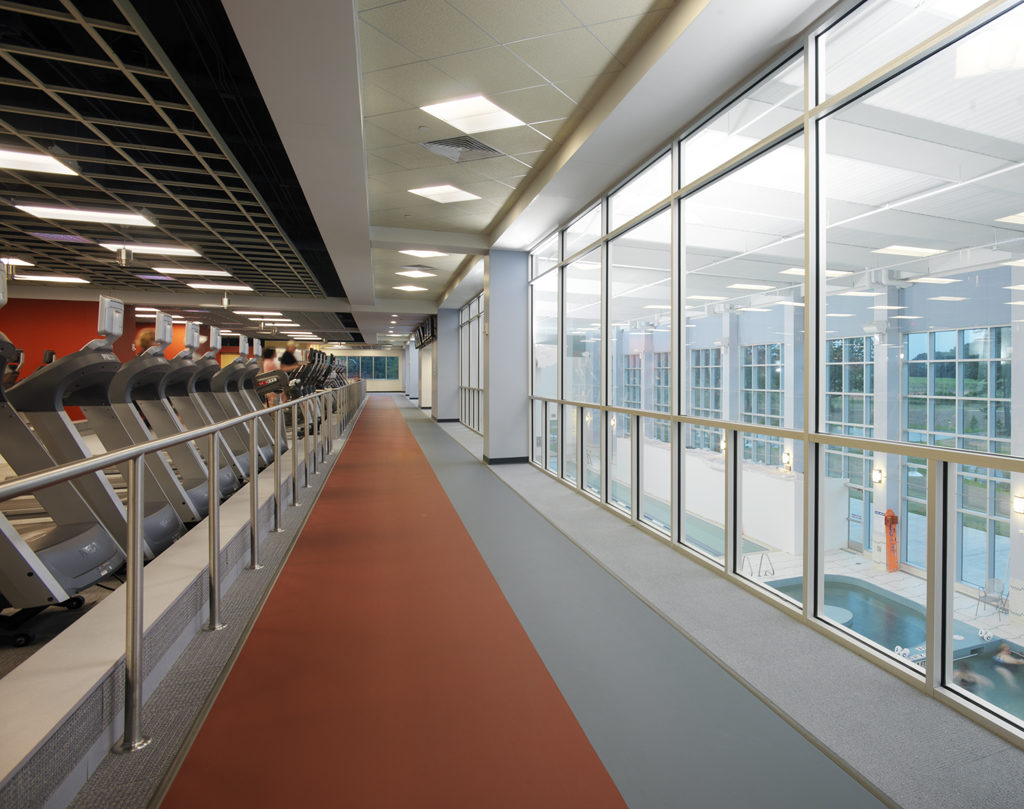
Picture 530
3. Technical introductions:
Like a light shelf, the sunscreen allows light to be reflected off the top surface into the interior space while shading the floor area below from glare. The Food and Beverage space at the Institute for Healthy Living is infused from above with both indirect and direct natural light. Not only are the members’ moods uplifted, but so are the sales from this calm and pleasant environment.
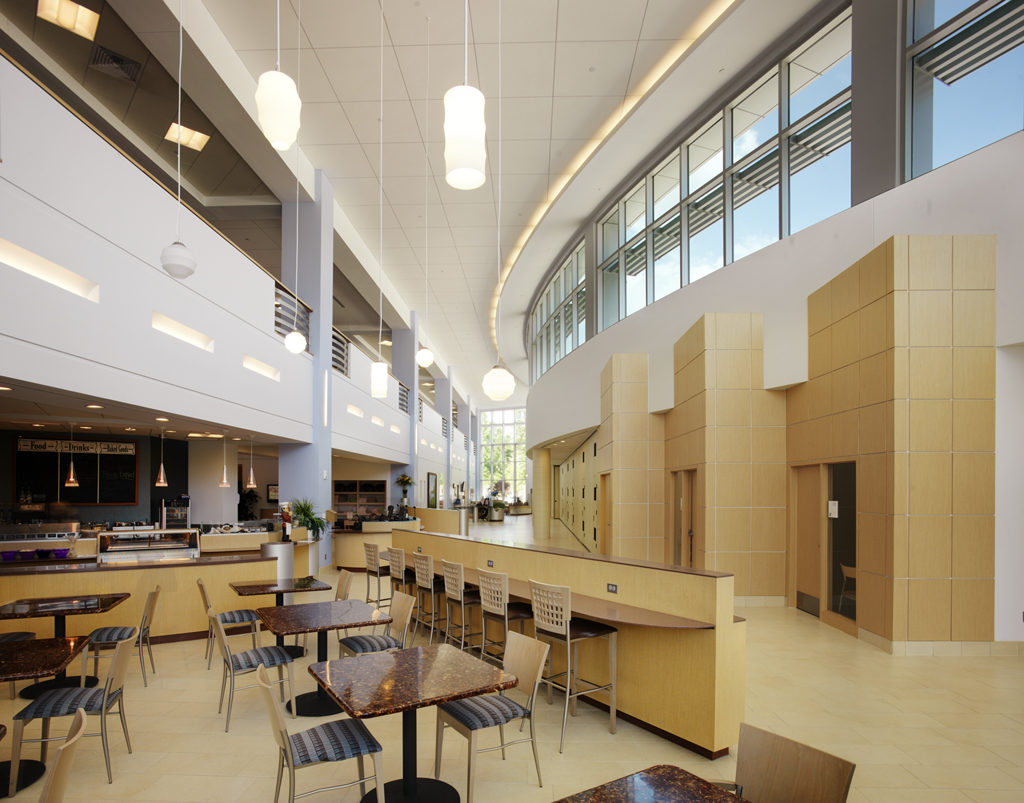
Skylights both traditional and tubular, are also a means to bring natural light deep into the facility interior. Translucent as opposed to clear glass should be used in these instances to diffuse the light and minimize glare. This large custom skylight at The Trails Recreation Center in Centennial, Colorado also allows light to spill into adjacent enclosed Aerobics Rooms.
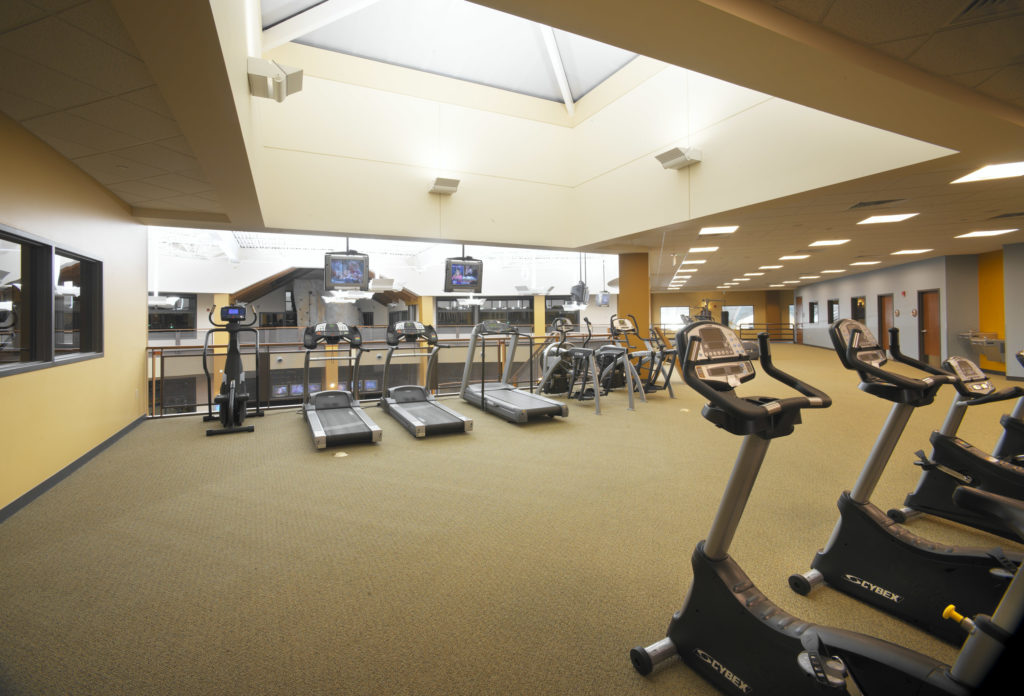
LaCasse 018
4. Glare:
Glare can be an issue for staff working all day at a front desk; spectators looking at light reflected off the water surface; and tennis players losing the ball against the bright backdrop of a window. In today’s facilities, the more multi-purpose in nature a space becomes, the greater are competing needs are for the introduction of light into spaces (and the lack there of). The Fieldhouse, for example, in Gillette, Wyoming, allows natural light to infiltrate during regular hours, and competitions, while mechanized shades close off the same windows when tennis is being played on the infield courts.
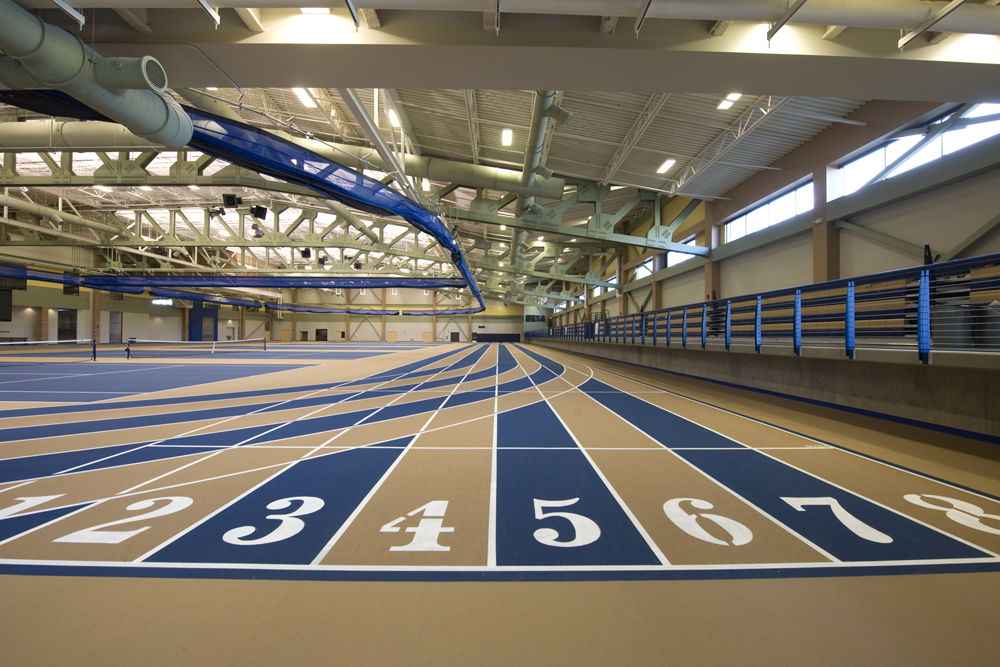
At the Estes Valley Community Center, fixed awnings allow natural light to come in, but never hit the gymnasium playing surface directly. With today’s computer software, it’s a relatively easy task to run sun studies at all times of the day for every day of the year to assure your customers and members experience the many benefits of daylight, without the drawbacks.
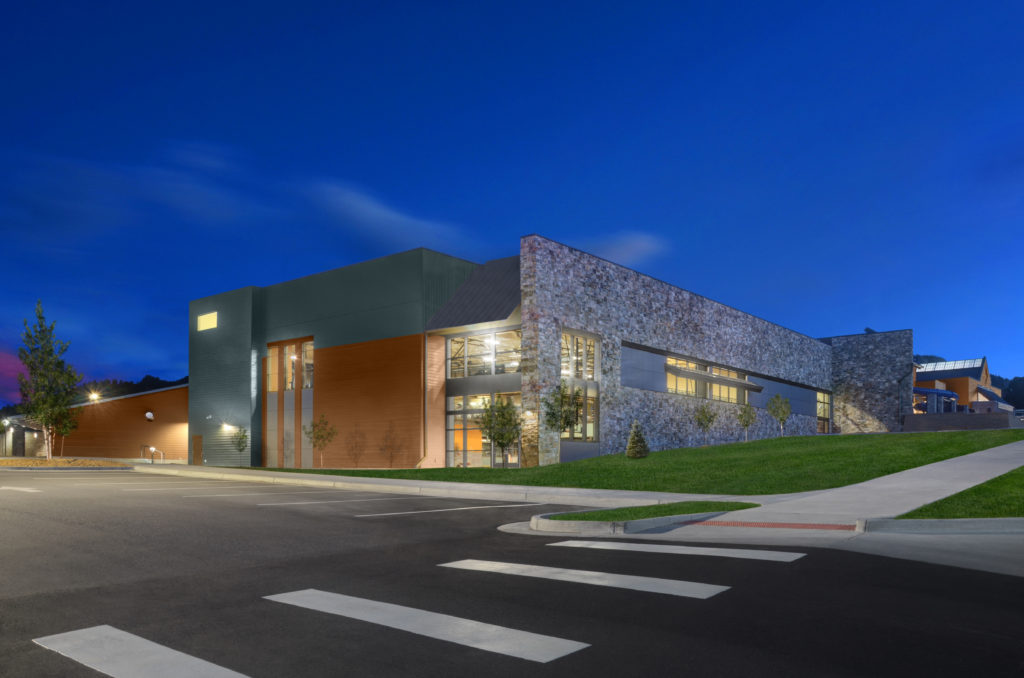
One last word of advice. If you are looking to cut your electric bill (who isn’t?), implement daylighting practices in your new facility. But, along with that, it’s also about controls. So, make sure your electrical engineer allows for dimming and shutoff of adjacent light fixtures that may be only needed during the evening hour of operation. And . . . let the sun shine in!
Next time we will discuss Locker Room Design. Where are the trends taking us?
